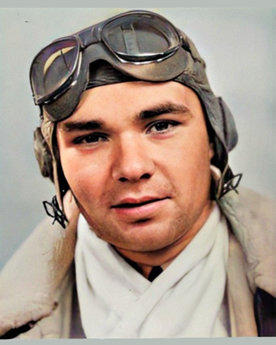
copyright © Wartime Heritage Association 2012-2024
Website hosting courtesy of Register.com - a web.com company
Wartime Heritage
ASSOCIATION
Remembering World War II
Howard Thomas Burns


Sources:
American Battle Monuments Commission – Howard T. Burns
American Battle Monuments Commission – Honolulu Memorial
findagrave: Howard Thomas Burns
findagrtave: Howard Burns
Name:
Howard Thomas Burns
Rank:
First Lieutenant
Service Number:
O-023822
Service:
Marine Fighting Squadron 111,
Marine Aircraft Group 31,
4th Marine Base Defense Aircraft Wing,
United States Marine Corps
Awards:
Air Medal, Purple Heart
Date of Birth:
March 26, 1921
Place of Birth:
Astoria, Clatsop County, Oregon
Date of Enlistment:
1942
Place of Enlistment:
Oregon
Address at Enlistment:
Oregon
Age at Enlistment:
20-21
Complexion:
Light
Hair Color:
Brown
Eye Color:
Blue
Date of Death:
July 7, 1944
Age:
23
Cemetery:
Honolulu Memorial, National Memorial Cemetery of the Pacific, Hawaii
Reference:
Court 2, Courts of the Missing
Howard Thomas Burns was the son of Patrick Howard Burns (1884–1965) and Margaret Elizabeth (Keegan)
Burns (1895–1982). Howard’s father was born in Ogden, Guysborough County, Nova Scotia. His mother was
born in Wytopitlock, Aroostook Co., Maine.
After moving to the United States, Howard’s father served in the US Army during the First World War as a
Master Engineer Junior Grade (Service No. 172450) with Group Headquarters, 13th Battalion, 20th Engineer,
Demolition, from Sept 22, 1917, until July 10, 1919.
Alec attended school in Naselle, Pacific Co., Washington and resided in Wauna, Oregon. The family lived in
Portland, Multnomah Co., Oregon in 1930, and Knappton, Pacific Co., Washington, 1935-1940. Alec
registered for the US Draft on February 16, 1942, in Wauna, and was working for the Wauna Library
Company at the time.
After enlisting in 1942, he trained at the Naval Pre-Flight
School in Saint-Mary’s, California in June 1942, and the
Naval Air Station in Jacksonville, Florida in 1943.
Alec mustered on the American aircraft carrier USS Essex
(CV-9) on September 15, 1943, as a Naval Aviation Cadet
(NAVC), departing San Diego with the destination listed as
‘VF’, VF meaning a US Navy/Marine Corps fighting aircraft
squadron. He served as a USMC fighter pilot with Marine
Fighting Squadron 111 (VMF-111), appearing on the
squadron’s muster rolls in January, April and July 1944.
Nicknamed the ‘Devil Dogs’, VMF-111 left Samoa in January
1944 for the Central Pacific and participated in raids against
bypassed Japanese garrisons for the rest of the war. This
practice, skipping over heavily fortified islands in order to
seize lightly defended locations that could support the next advance, became known as island hopping. As
Japanese strongholds were isolated, defenders were left to weaken from starvation and disease. This new
strategy turned the vast Pacific distances into an American ally, and the United States used it to leapfrog
across the Pacific. That said, these bypassed garrisons were still a threat, and VFM-111 was tasked with
eliminating these.
First Lieutenant Howard Thomas Burns died
after being wounded on a mission against a
Japanese base in the Marshall Islands in the
South Pacific. The Squadron’s muster states:
died after an airplane crash at 1640 hrs. on
July 7, 1944, and that his body was not
recovered.
First Lieutenant Howard Thomas Burns has no
known grave and is remembered in Court 2 of
the Courts of the Missing of the Honolulu
Memorial of the American Battle Monuments
Commission with the National Memorial
Cemetery of the Pacific in Honolulu, Hawaii.
He is also remembered on the base of the US
flagpole erected by the Veterans of Foreign
Wars (VFW) Post 7825 at the Peaceful Hill
Cemetery, Naselle, Pacific County, Washington.

Clatsop Co. Historical Society Quarterly
Vol. 15 cover, No 3, Summer 1995





- World War I - Menu
- WWI Stories and Articles
- Photos - Yarmouth Soldiers
- Selection of World War I Songs
- WWI Casualties of Yarmouth, NS
- Those Who Served - Yarmouth, NS
- WWI Casualties Digby Co. NS
- WWI Casualties Shelburne Co. NS
- Merchant Mariners (1915) Yarmouth, NS
- Canadian Forestry Corps - Non Yarmouth Birth/Residence Enlistments
- US Draft Registry - Yarmouth NS Born


- World War II - Menu
- WWII Stories and Articles
- Telegraphist Air Gunners
- WWII Casualties of Nova Scotia
- US Casualties with NS Connection
- Far East/Pacific Casualties with NS Connection
- Merchant Navy Casualties Nova Scotia
- Nova Scotia WWII Casualties Holten Canadian War Cemetery
- D-Day Casualties - Nova Scotia
- CANLOAN Program Casulaties - Nova Scotia
- Battle of the Bulge Casualties - Nova Scotia
- WWII Casualties Yarmouth NS
- Yarmouth Casualties - RCAF RAF Canadian Army WWII
- Yarmouth Co., Marrages WWII
- Casualties Non-Born/Residents with Connection to Yarmouth Co., Nova Scotia.
- WWII Casualties Digby Co., NS
- Non-Nova Scotian WWII Casualties Buried in Nova Scotia
- WWII RCAF Casualties Aged 16-18
- Brothers/Sisters Who Served - World War II













